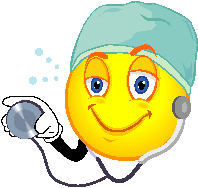
*Notes from the Nurse*

So you banged your thumb, cut your hand or otherwise injured a perfectly good body part. O darn. Now what do you do? Depending on your medical skills the answer may vary considerably. So to will your aid bag vary considerably.
First aid kits are usually one of the first things preparedness minded people think about. Having been an Army Medic, a civilian EMT and now as a Registered Nurse First Assist (Surgical assistant), I am routinely asked what a First Aid kit should contain. After giving this some considerable thought I have come up with this answer:
Your kit should contain only those items that you are qualified and competent to use!
The following is a brief overview of three examples of what a preparedness minded person may put together. I would describe the ideal First Aid Kit under three categories:
Three types:
1) The Family or non-medical person’s First Aid Kit(FAK)
2) The Intermediate FAK when you are assisted remotely by advanced medical personnel using alternate means of communication i.e. Phone, radio, or computer (VOIP).
3) Advanced FAK when medical personnel are on site.
The family first aid kit is a living entity. You will find that it will change over the years as your family grows and changes. When our children were babies we would never think of going anywhere without anti-gas drops, or children’s ibuprofen for the twin babies. For the average family with children above the age of toddlers the FAK should consist at a minimum of the following:
A) Bandaging materials: Band-Aids, gauze pads, gauze roll, Elastic bandages (Ace Wrap), Coban, tape, antibiotic ointment, iodine ointment or fluid
B) Medications: Tylenol, aspirin, ibuprofen, diphenahydramine (Benadryl), Pepto-Bismol pills, Solarcaine (a personal favorite) and any routine but life- necessary medications i.e. insulin for diabetics and inhalers and nebulizers for asthmatics.
C) Maintenance creams/powders: calamine lotion, sunscreen, insect repellant, athletes foot cream/powder, talcum or baby powder, all purpose skin lotion
D) Miscellaneous: baby wipes, antibacterial lotion and wipes, Gatorade powder or Pedialyte fluid, splinting materials.
The Intermediate FAK would consist of the Family FAK plus the following medical gear if you know how to use it:
A) Routine assessment gear: thermometer, Blood Pressure cuff and stethoscope, glucometer.
B) Advanced assessment gear: Pulse oximeter, AED or EKG, otoscope and ophthalmoscope.
C) Minor procedure equipment: suturing instruments and suturing supplies, oxygen and oxygen delivery supplies
The Advanced FAK is limited only by financial resources and the ratings and abilities of your medical personnel. The range of this type of equipment is vast and would be a time consuming task to describe. Generally there would be three types of gear: Emergency, routine medical and long term care.
Emergency gear would be for immediate life threatening situations such as trauma or heart attack. The type of gear would include things for emergency resuscitation that one would find on an Emergency Room “Crash Cart” such as a defibrillator and emergency tracheotomy kits for example as well as Intravenous fluids and medications.
Routine medical gear is what you would find in the small town country doctors office. These things would include 1.) Casting and splinting material for broken bones. 2.) Routine medications such as antibiotics for illnesses and pain medicine for minor injuries. 3.) Routine assessment equipment such as x-ray, devices for pulmonary function tests and minor lab equipment.
Long term medical gear is what you would find in a general duty nursing home. This type of equipment would include hospital beds, Hoyer lifts, shower chairs, oxygen concentrators to name just a few.
In conclusion, the First Aid Kit can be a simple or complex and is limited only by your individual training and competency. I encourage everyone to start building your first aid kit now. Using your kit is the surest way to find out what you need to keep in it. Additionally, I would like to add that as preparedness minded people it is to our own family’s benefit to advance our individual knowledge about medicine. Your American Red Cross is an excellent place to start with their Basic First Aid course. Good luck and keep on learning.
aricrn
www.alpharubicon.com
All materials at this site not otherwise credited are Copyright © 1996 - 2009 Trip Williams. All rights reserved. May be reproduced for personal use only. Use of any material contained herein is subject to stated terms or written permission.